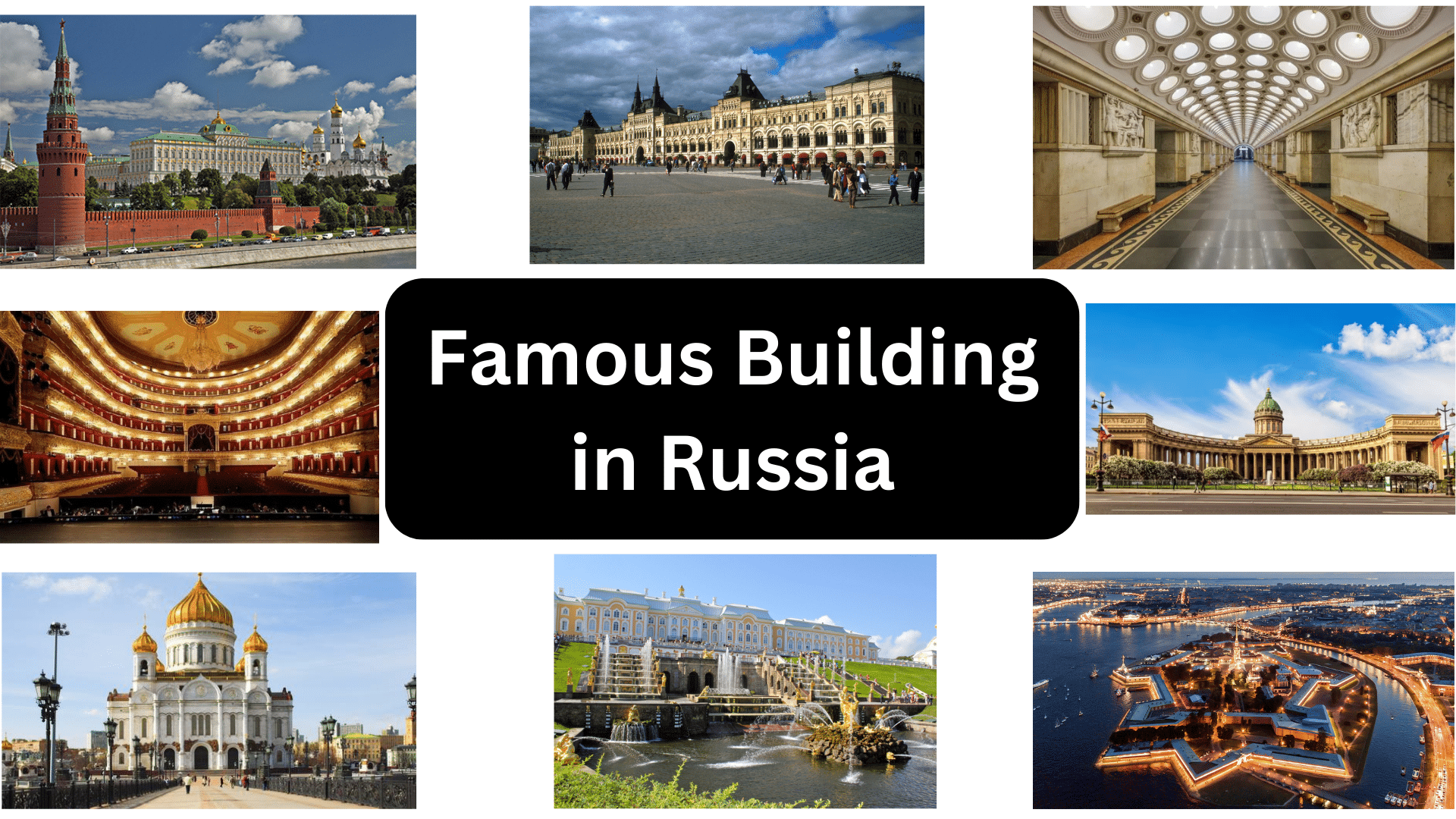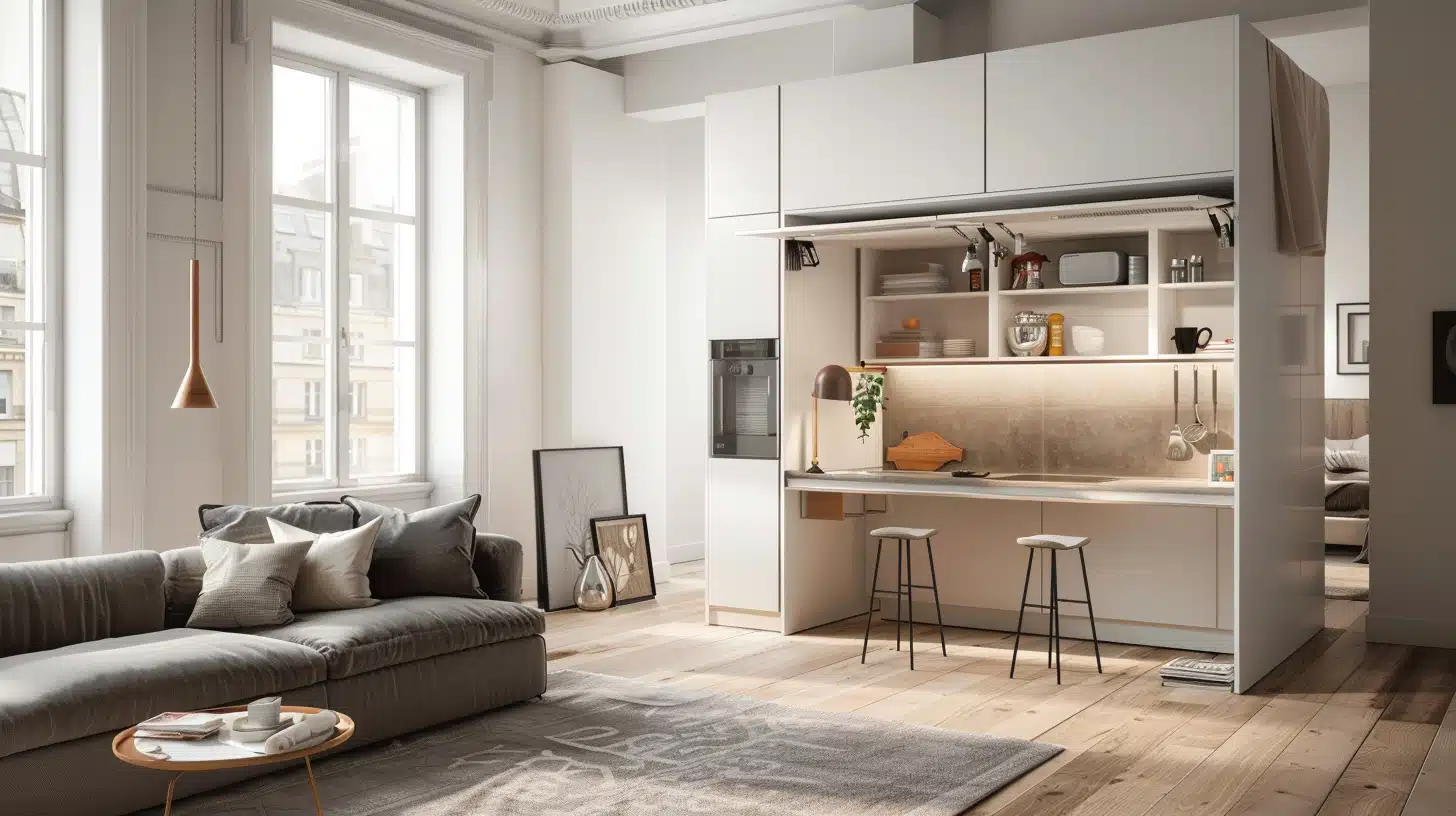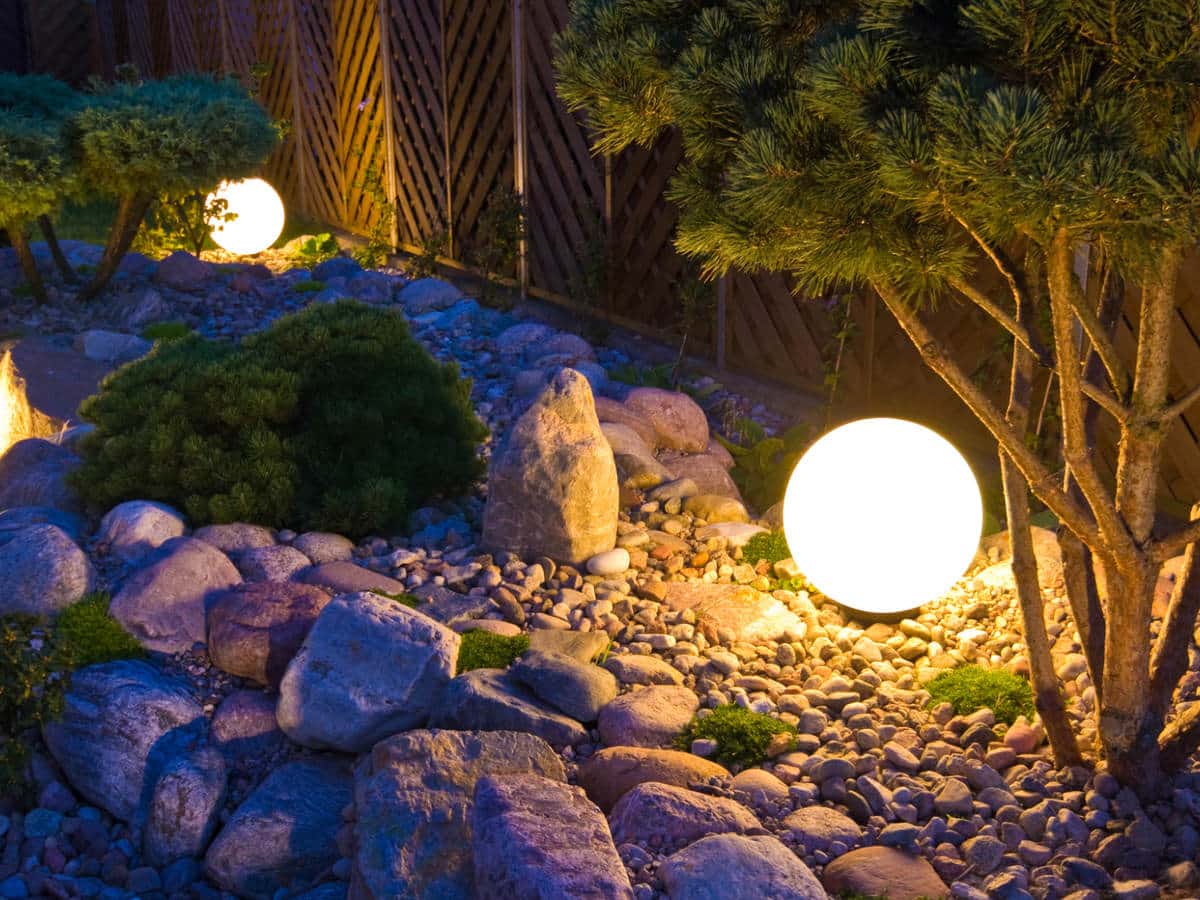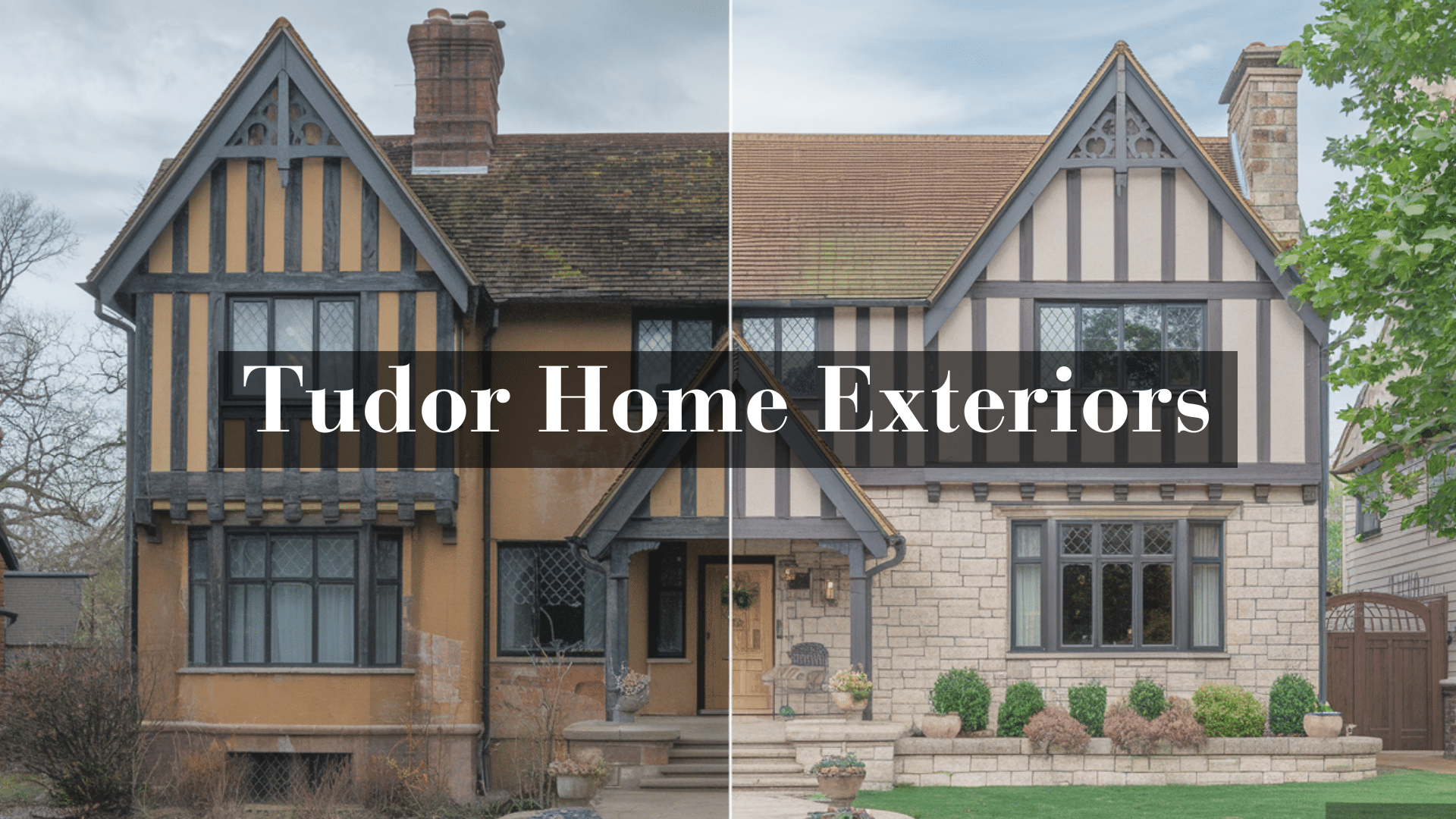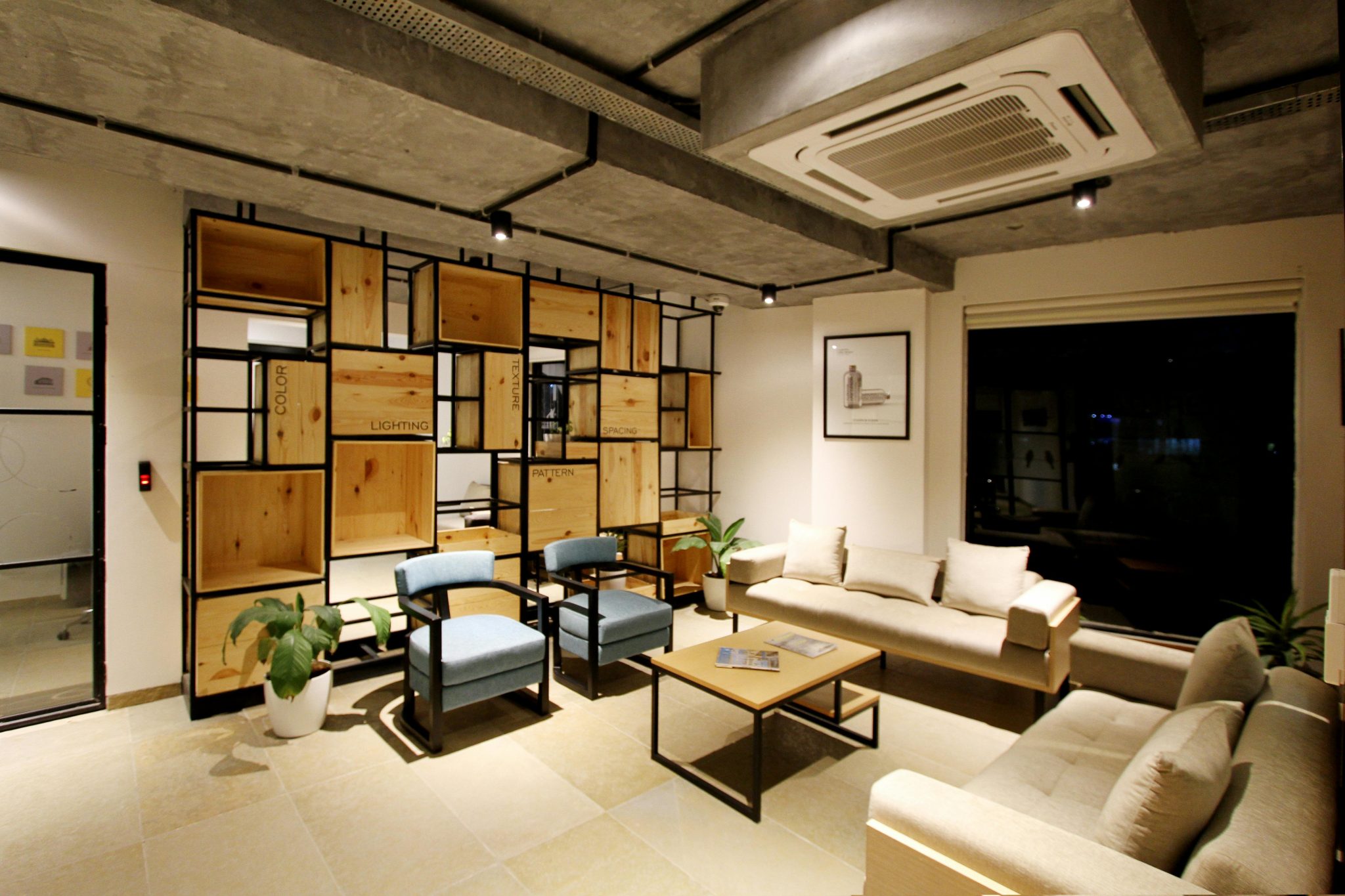13 Famous Building in Russia: Must-See Architectural Wonders
Have you ever wondered about the stories behind the buildings you see? Russia’s famous buildings are full of history.
They span centuries, from the days of the tsars to the Soviet era and beyond. Each building blends different styles, making them distinctly Russian.
As you find these landmarks, you’ll gain a deeper understanding of Russia’s complex identity.
You’ll see how its history shaped the architecture and how the past and present merge in these beautiful structures.
Keep reading to learn more about famous buildings in Russia!
Why Russian Architecture Stands Out
Russian architecture has a special place in world design history.
It began with wooden structures in ancient times, then moved to stone buildings when Orthodox Christianity arrived.
This mix of Eastern and Western styles is what makes Russian buildings so special.
The country’s vast size allowed for the growth of many regional styles, from Moscow’s colorful patterns to St. Petersburg’s European grace.
Russian buildings show clear marks from different periods—Byzantine church designs, Asian influences from the East, and later European styles from the West.
During Peter the Great’s time, Russian cities began to look more like those in Western Europe. Then came the Russian Revival style, Soviet blocks, and today’s modern designs.
What truly sets Russian architecture apart is its bold use of color, unusual shapes, and ability to blend opposite styles.
The contrast between simple village homes and grand city palaces shows Russia’s range of architectural thinking.
These buildings aren’t just beautiful – they’re symbols of Russia’s history and its place between East and West.
Top Buildings You Must See in Russia
1. St. Basil’s Cathedral – Moscow’s Colorful Landmark
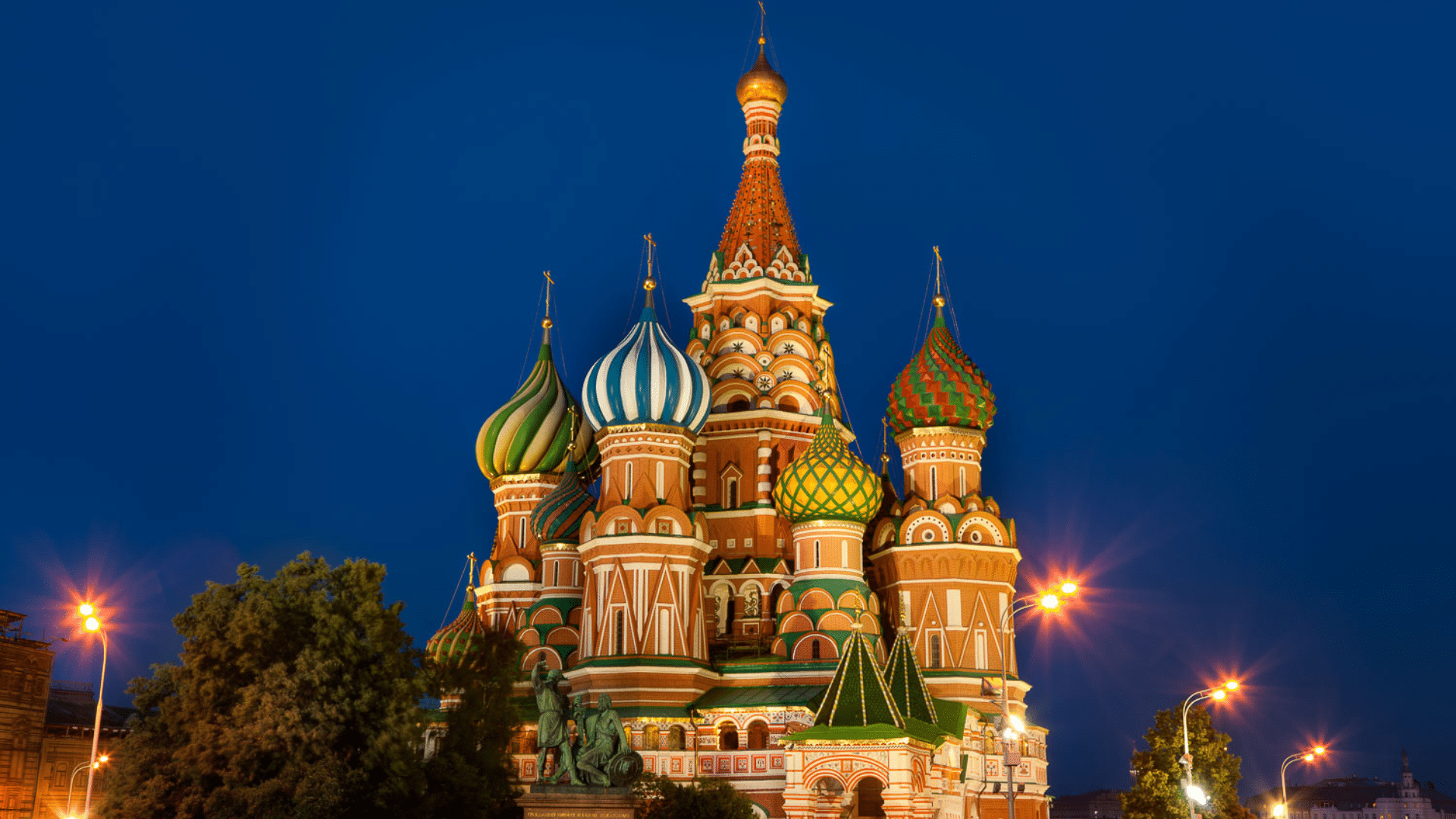
St. Basil’s Cathedral, built in the 16th century under the orders of Ivan the Terrible, is one of Moscow’s most famous landmarks.
Its vibrant colors and uniquely shaped domes set it apart from other religious structures. The cathedral’s design reflects medieval Russian architecture and spiritual symbolism.
- Architectural Style: Russian Orthodox with unique tented roofs and onion domes.
- Historical Significance: Commemorates the capture of Kazan and Astrakhan.
- Nearby Attractions: Red Square, Kremlin, GUM Department Store.
Visiting Tips:
- Arrive early to avoid large crowds.
- The best photo spots are from Red Square and Zaryadye Park.
2. Winter Palace – The Grand Imperial Residence

Located in St. Petersburg, the Winter Palace served as the official residence of Russian emperors from the 18th to the early 20th century.
Today, it houses the world-famous Hermitage Museum, featuring masterpieces from artists such as Rembrandt and Leonardo da Vinci.
- Architectural Style: Baroque with intricate facades and grand staircases.
- Historical Significance: Former residence of Russian tsars; witnessed the 1917 revolution.
- Nearby Attractions: Palace Square, Admiralty Building, Nevsky Prospect.
Best Times to Visit:
- Visit during the off-season (late fall or early spring) to avoid peak tourist crowds.
- Arrive in the morning for a quieter experience.
3. Peterhof Palace – The Russian Versailles
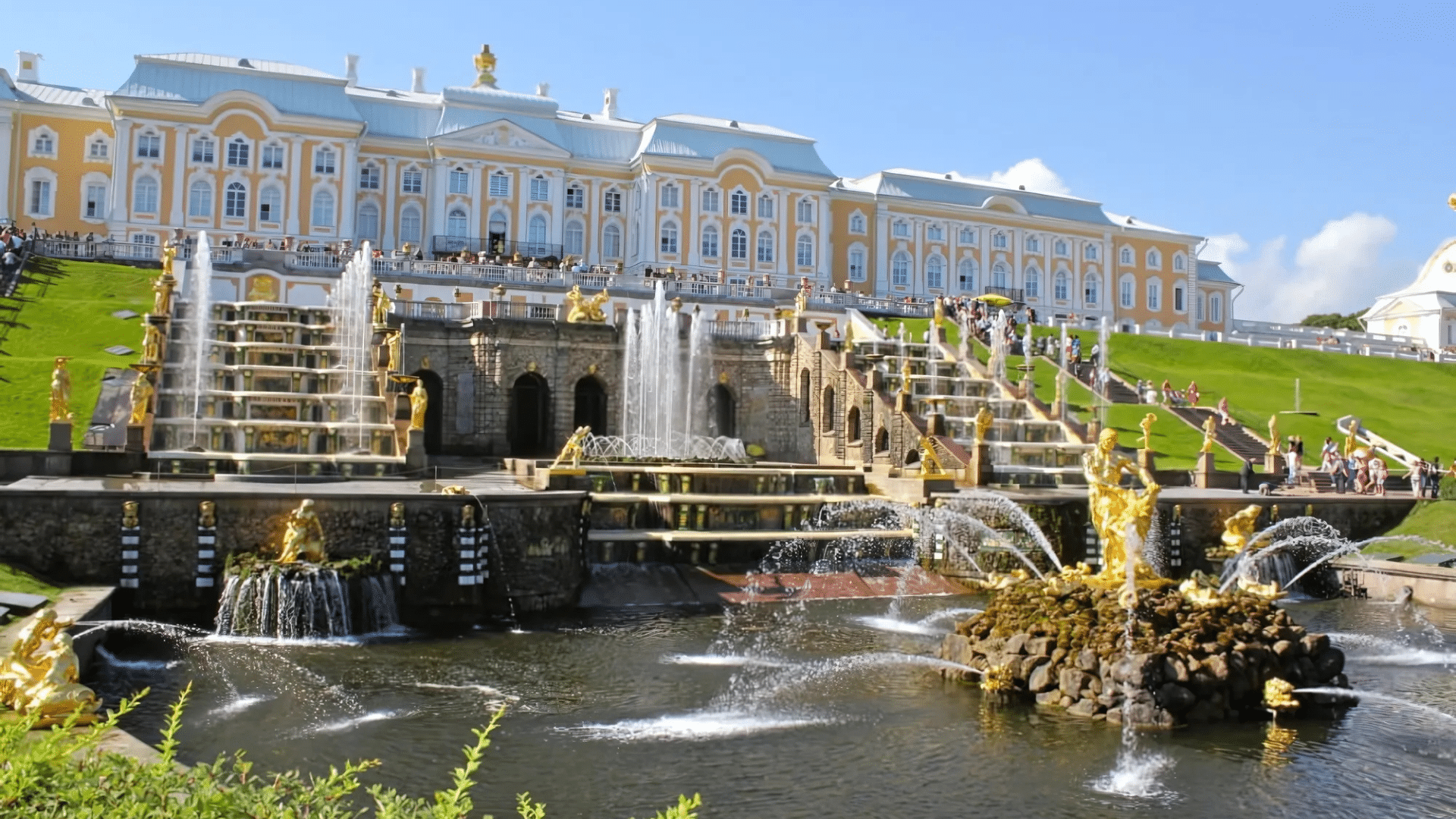
Commissioned by Peter the Great, Peterhof Palace is famous for its elaborate gardens and the Grand Cascade, a system of fountains that operate without pumps.
The palace interiors showcase lavish decorations, gilded moldings, and artwork from different centuries.
- Architectural Style: Baroque with elaborate fountains and terraces.
- Historical Significance: Built as a symbol of Russia’s naval strength.
- Nearby Attractions: Gulf of Finland, Monplaisir Palace, Alexandria Park.
Seasonal Differences:
- Summer provides the best experience with the fountains in full operation.
- Winter offers a quieter visit with a snow-covered landscape.
4. Catherine Palace – The Blue Marvel of St. Petersburg
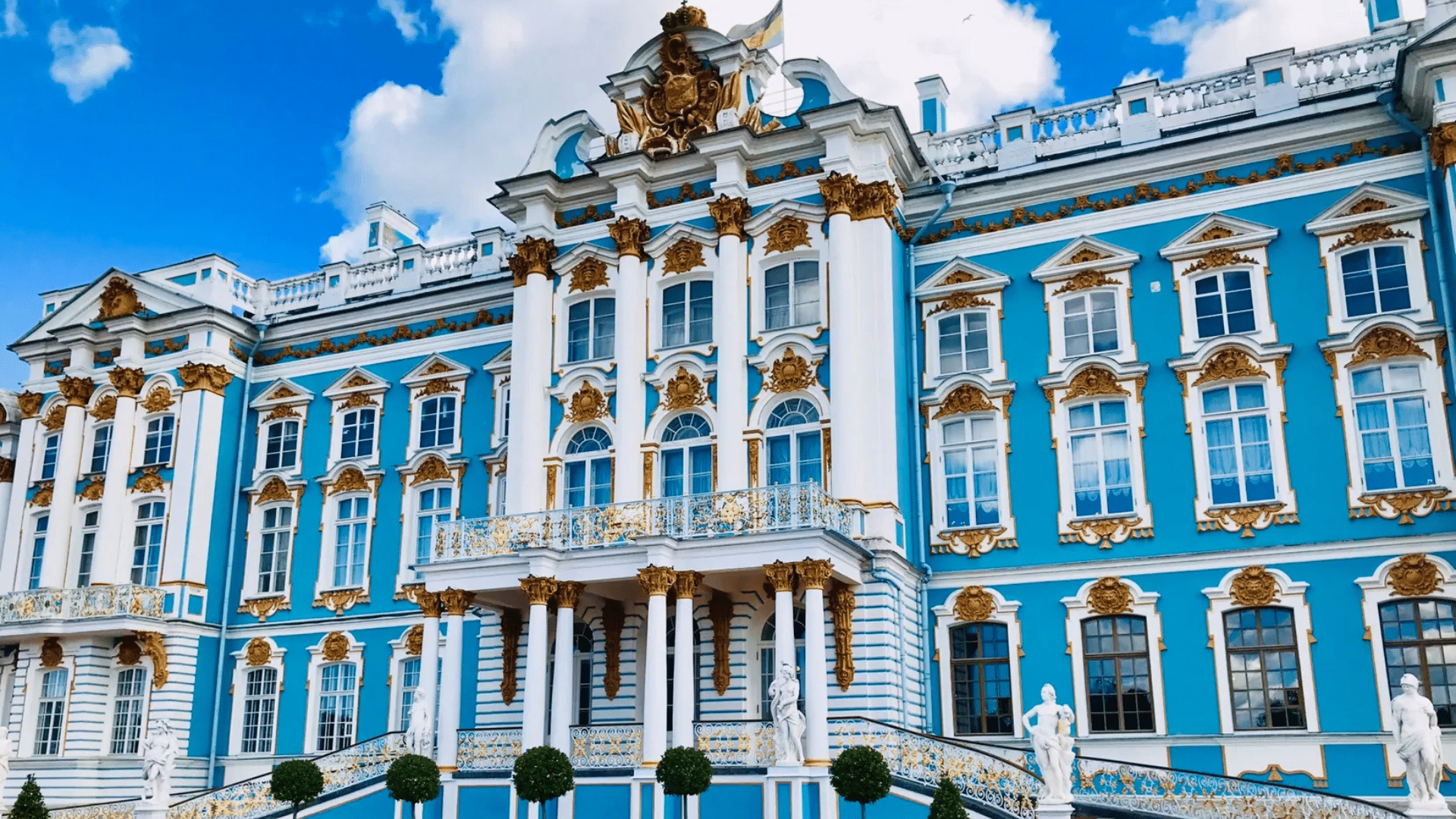
Catherine Palace, known for its blue and white exterior, was originally built for Catherine I.
The palace’s Amber Room, reconstructed after being lost during World War II, remains one of its most visited attractions. The surrounding gardens also add to its appeal.
- Architectural Style: Rococo with elaborate ornamentation and gilded interiors.
- Historical Significance: Served as the summer residence of Russian tsars.
- Nearby Attractions: Tsarskoye Selo, Alexander Palace, Pushkin Town.
Highlights:
- The Grand Hall with intricate gold detailing.
- The park is perfect for leisurely walks.
5. Moscow Kremlin – Russia’s Historic Fortress
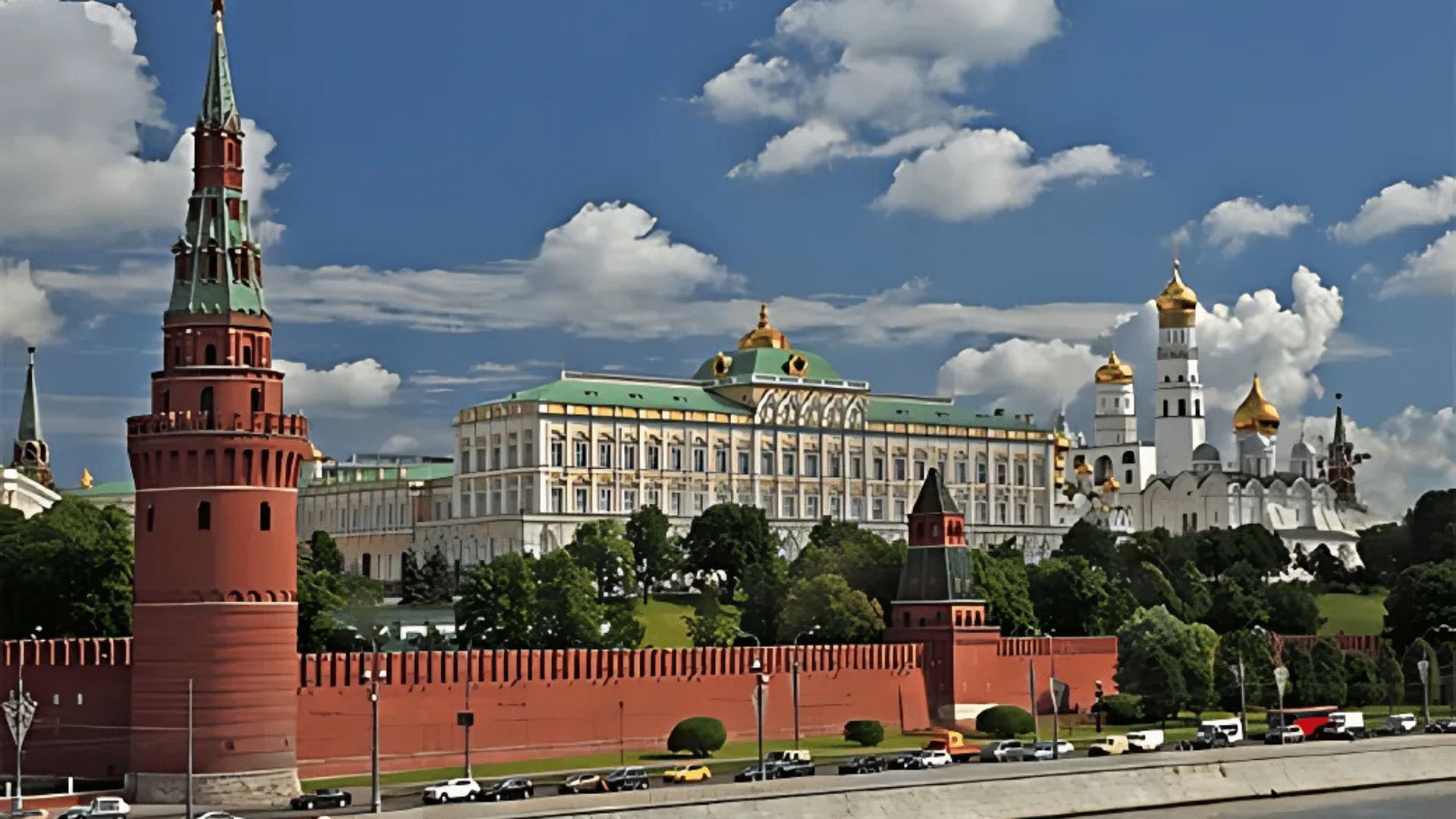
The Moscow Kremlin is a fortified complex located in the heart of the city, containing government buildings, palaces, and cathedrals.
Its high walls and watchtowers date back centuries and symbolize Russia’s political and historical power.
- Architectural Style: Medieval fortress with Renaissance influences.
- Historical Significance: Seat of the Russian government and historical center of Moscow.
- Nearby Attractions: Red Square, Lenin’s Mausoleum, St. Basil’s Cathedral.
Must-See Areas:
- The Armory Museum displays imperial treasures.
- Beautiful churches surround the Cathedral Square.
6. Bolshoi Theater – Home of Russian Ballet
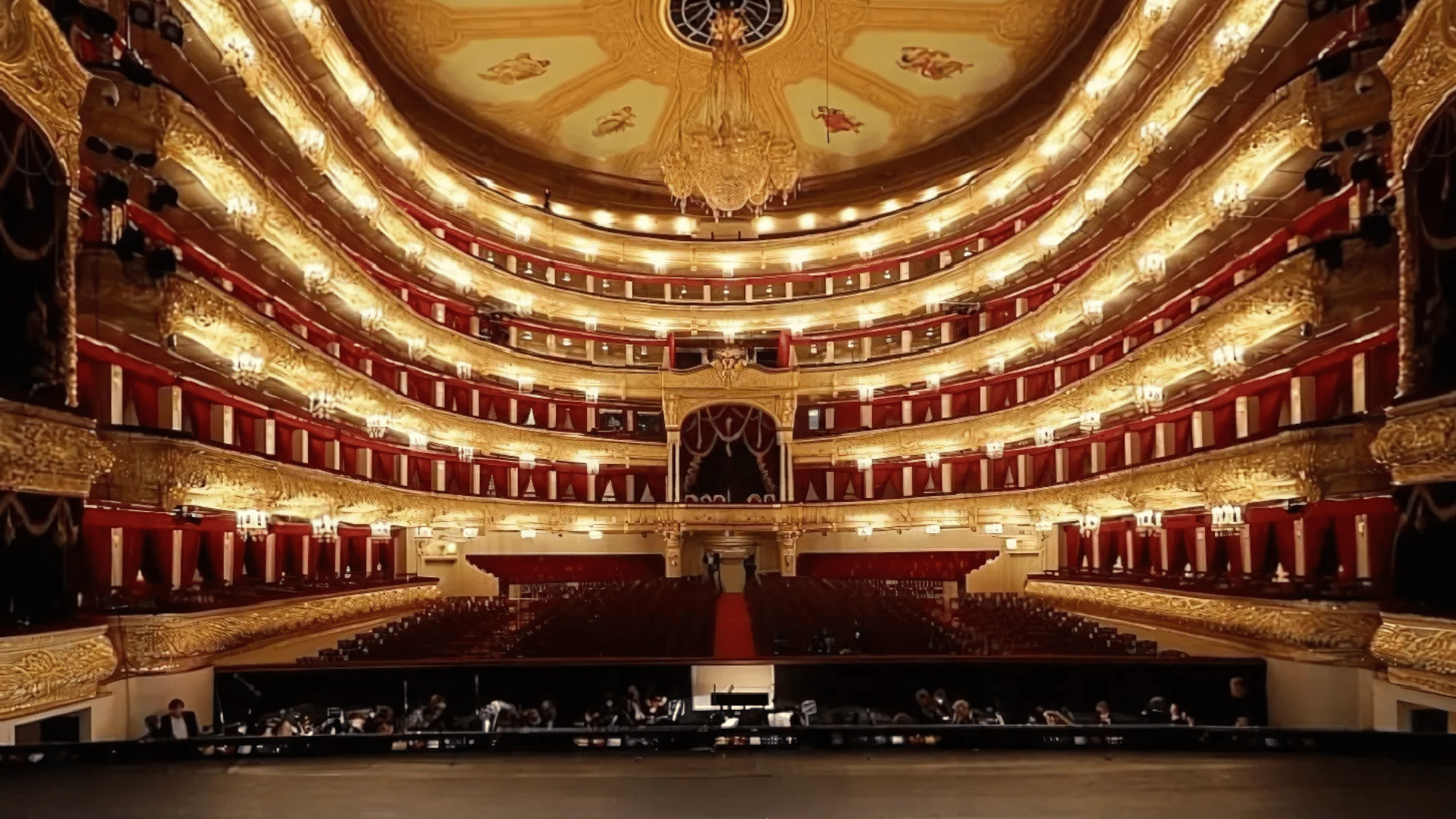
Since the 18th century, the Bolshoi Theater has been a center for ballet and opera.
Although it has undergone several reconstructions, its neoclassical design remains a masterpiece. The interior features exquisite chandeliers and an opulent main hall.
- Architectural Style: Neoclassical with grand columns and ornate interiors.
- Historical Significance: A leading stage for Russian ballet and opera.
- Nearby Attractions: Tverskaya Street, Revolution Square, Alexander Garden.
Performance Tips:
- Purchase tickets well in advance.
- Dress formally to match the venue’s traditional etiquette.
7. Cathedral of Christ the Savior – Moscow’s Tallest Orthodox Church
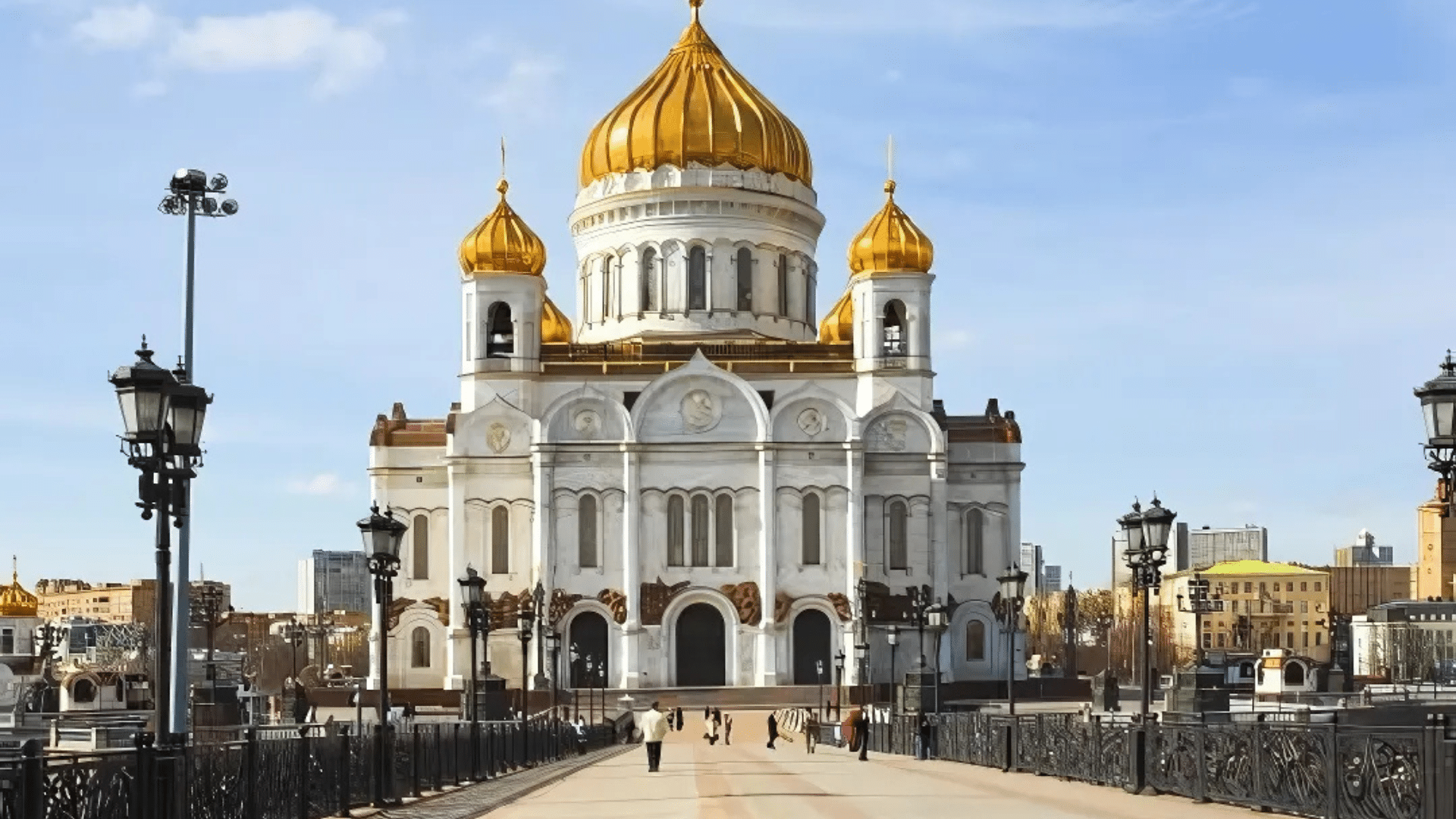
Originally built in the 19th century, the Cathedral of Christ the Savior was demolished during the Soviet era and later reconstructed.
Its white walls and golden domes dominate the Moscow skyline.
- Architectural Style: Russian Revival with towering domes and frescoes.
- Historical Significance: Built to commemorate the victory over Napoleon; later rebuilt.
- Nearby Attractions: Patriarch’s Bridge, Arbat Street, Gorky Park.
Visitor Information:
- The cathedral offers beautiful views from its observation deck.
- Dress modestly when entering, as it remains an active place of worship.
8. Moscow Metro Stations – Underground Palaces
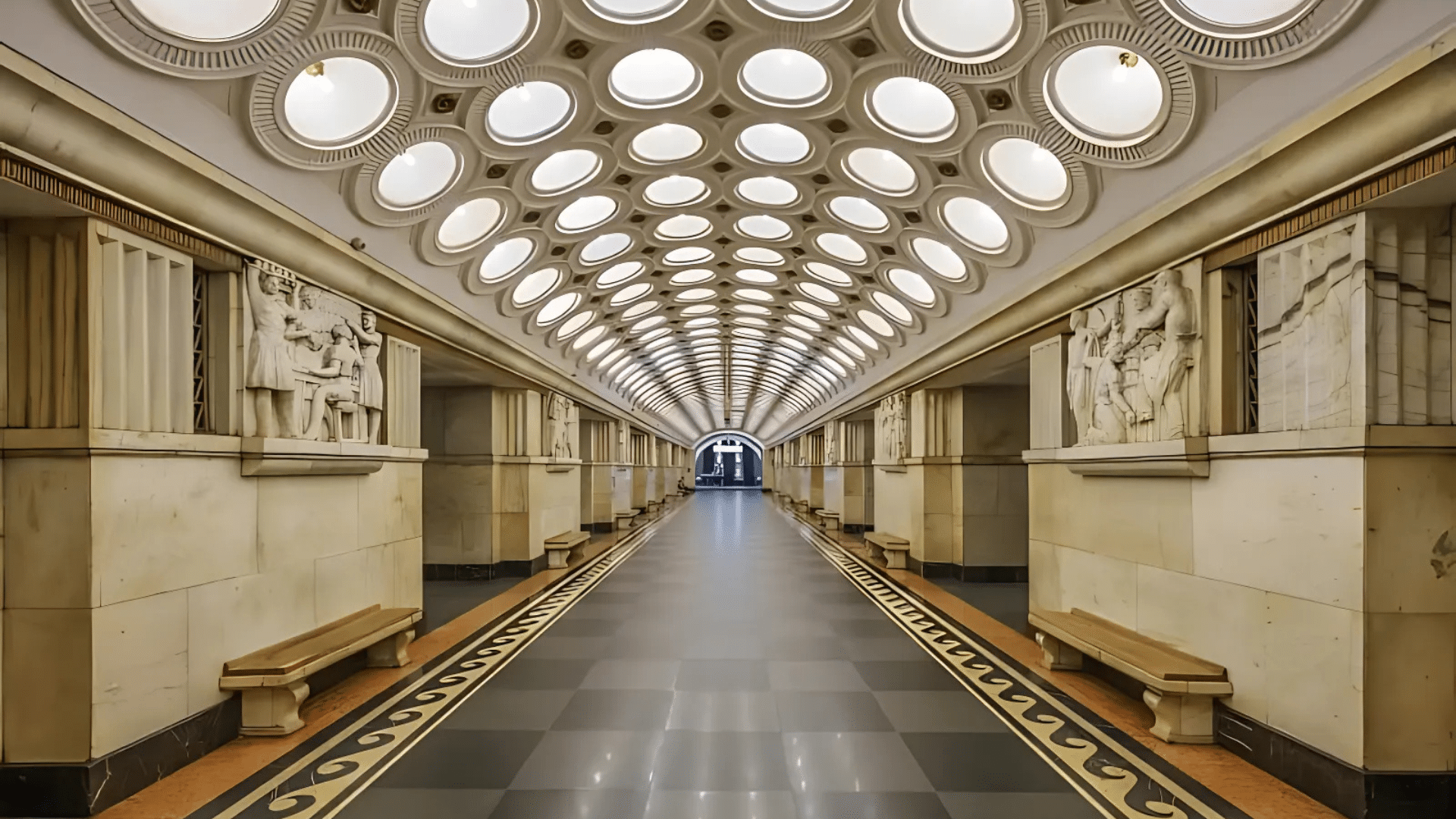
Moscow’s metro stations are famous for their elaborate mosaics, chandeliers, and sculptures, often compared to underground museums.
- Architectural Style: Socialist Classicism with Art Deco influences.
- Historical Significance: Built as “palaces for the people” under Stalin’s rule.
- Nearby Attractions: Various stations near Red Square and Tverskaya Street.
Recommended Stations:
- Komsomolskaya, featuring baroque-style ceilings.
- Mayakovskaya is known for its futuristic design.
9. Kazan Cathedral – St. Petersburg’s Neoclassical Masterpiece
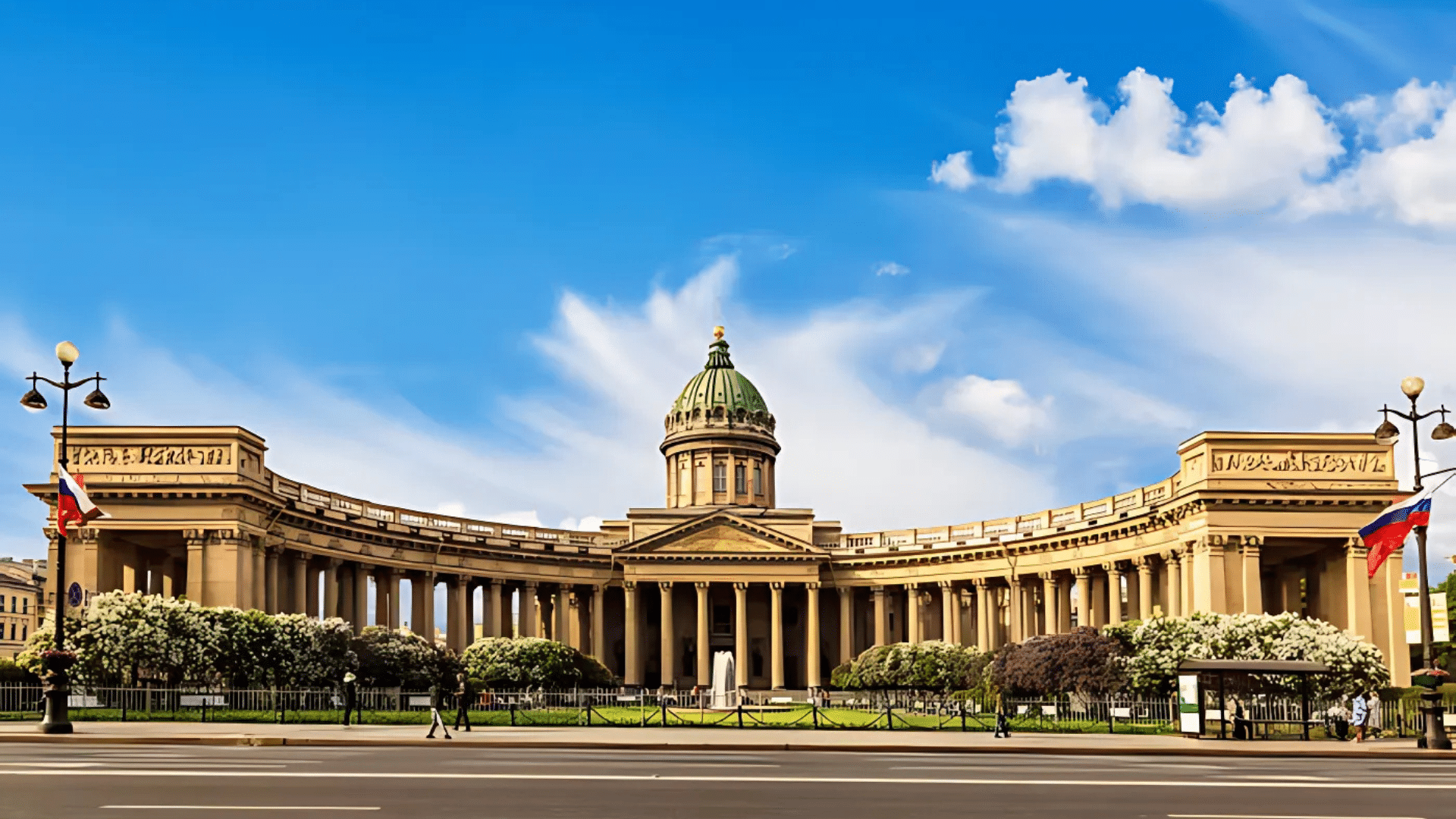
Inspired by St. Peter’s Basilica in Vatican City, Kazan Cathedral features an expansive colonnade and a richly decorated interior.
It played a crucial role in Russian religious and military history.
- Architectural Style: Neoclassical with grand colonnades.
- Historical Significance: Symbol of Russian Orthodoxy and national pride.
- Nearby Attractions: Nevsky Prospect, Church of the Savior on Spilled Blood.
Interior Features:
- Icon of Our Lady of Kazan, one of Russia’s most revered religious artifacts.
- High ceilings with detailed frescoes.
10. Peter and Paul Fortress – The Birthplace of St. Petersburg
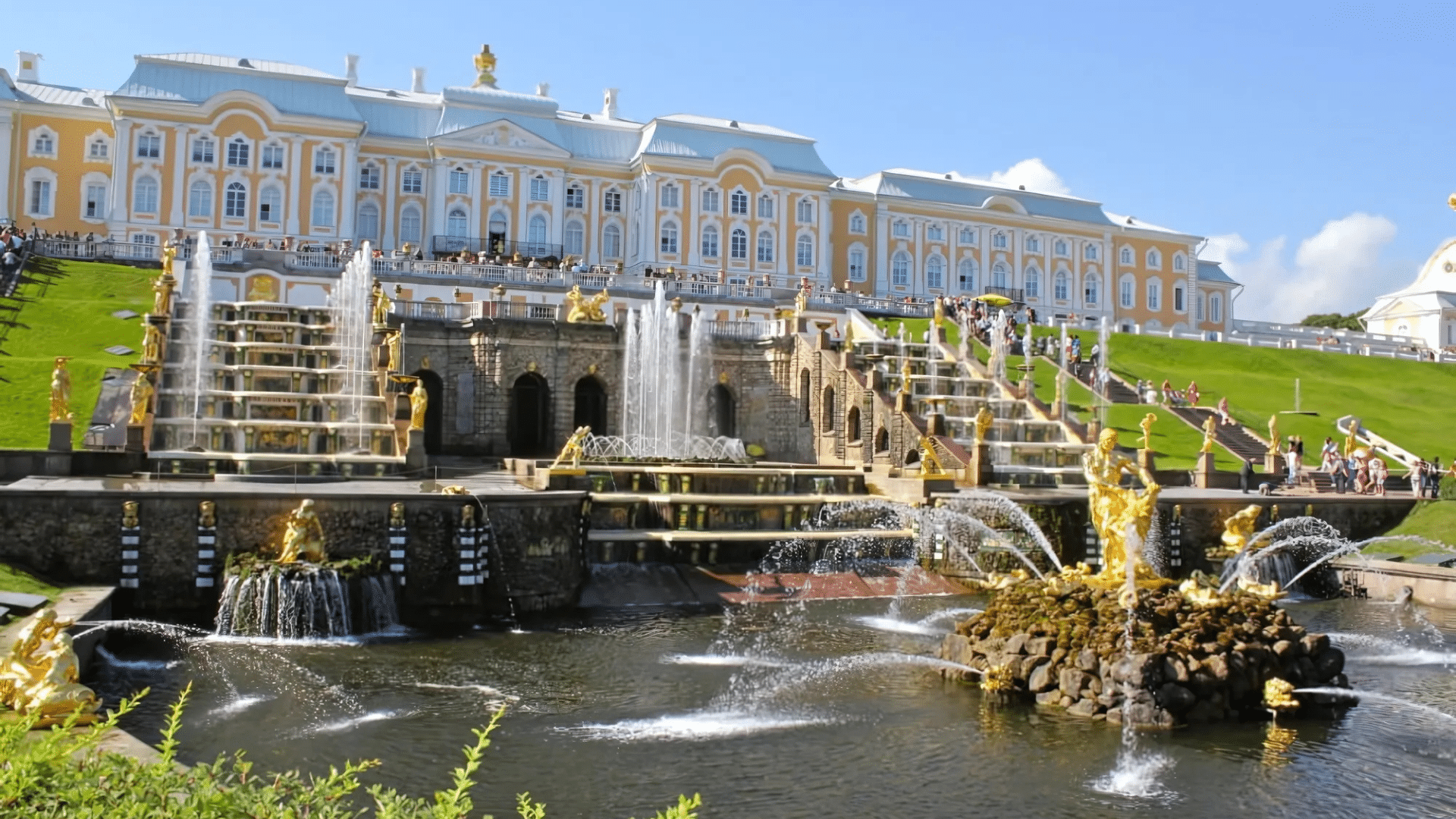
Founded by Peter the Great, this fortress served both military and prison functions. Inside, the Peter and Paul Cathedral contained the tombs of Russian emperors.
- Architectural Style: Baroque with fortified walls.
- Historical Significance: The first structure was built in St. Petersburg.
- Nearby Attractions: Neva River, Kunstkamera, Yusupov Palace.
What to See:
- Museum exhibits detailing the fortress’s history.
- The daily cannon firing tradition at noon.
11. GUM Department Store – Shopping in Historic Surroundings
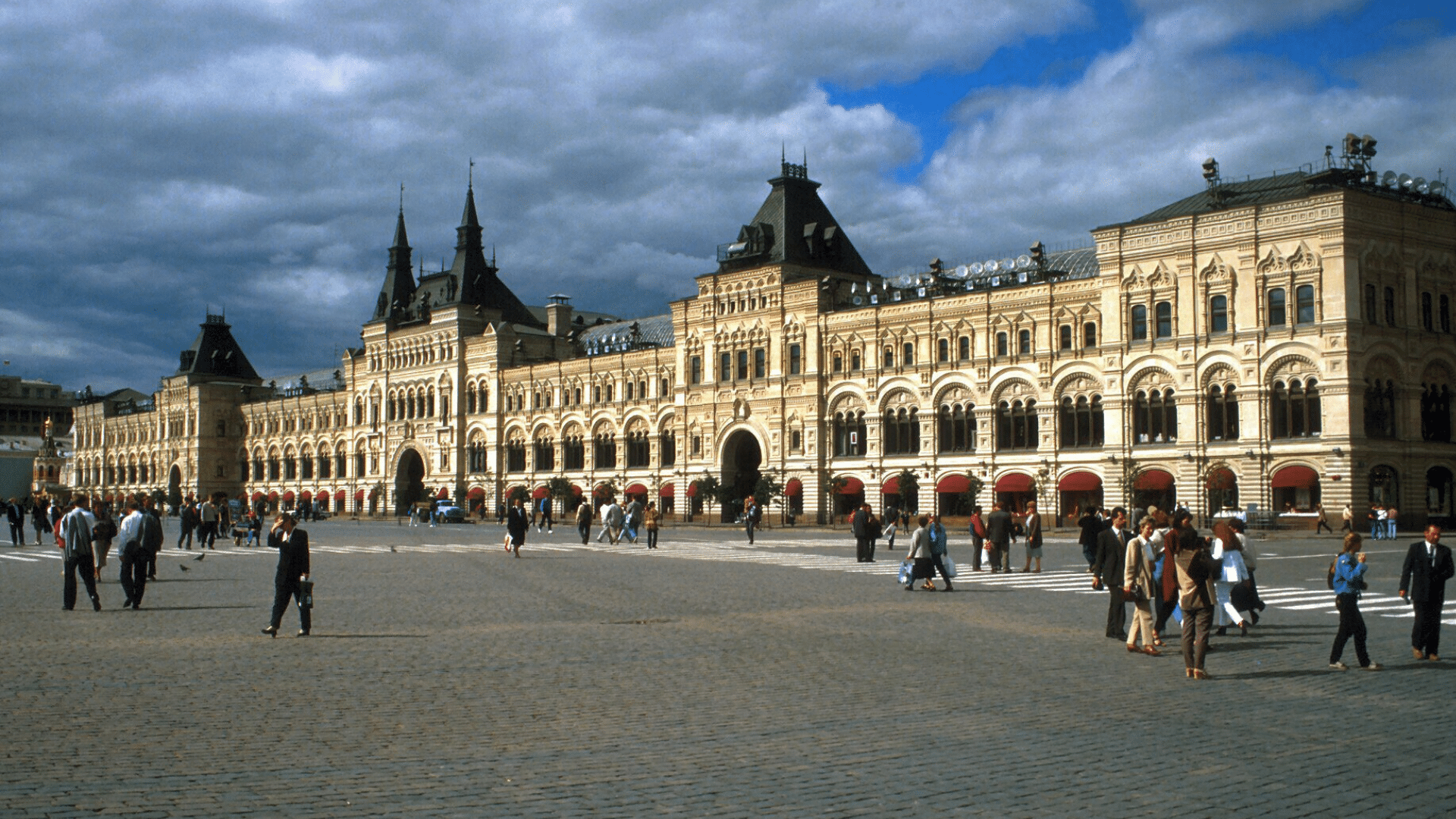
GUM, located on Red Square, blends luxury shopping with historical significance. Built in the 19th century, it retains much of its original design while housing modern high-end stores.
- Architectural Style: Russian Revival with a glass-roofed arcade.
- Historical Significance: Iconic Soviet-era department store.
- Nearby Attractions: Red Square, Lenin’s Mausoleum, St. Basil’s Cathedral.
Must-Try:
- The famous GUM ice cream is a popular treat for visitors.
- The Soviet-style dining hall for traditional Russian dishes.
- Russia’s architectural wonders showcase its vast history, culture, and artistic achievements.
Planning Your Russian Architectural Tour
Best Times of Year to Visit
Spring, from April to June, and fall, from September to October, offer mild weather and fewer tourists, making them ideal seasons for visiting.
Winter, from December to February, provides a magical, snow-covered experience, though travelers must be prepared for extremely cold temperatures.
Transportation Between Cities
High-speed trains such as the Sapsan connect Moscow and St. Petersburg in under four hours, making travel between these major cities quick and comfortable.
Domestic flights are ideal for covering large distances between regions.
Within cities, Moscow and St. Petersburg boast efficient metro systems known for their reliability and ornate station designs.
Photography Tips for These Landmarks
Early morning and late afternoon provide the best natural lighting for capturing the beauty of Russia’s architectural wonders.
A wide-angle lens is useful for photographing grand structures, ensuring all details fit within the frame.
Reflections in rivers and fountains can be used innovatively to enhance images, and capturing buildings at night, when they are illuminated, adds a different perspective.
Guided Tours vs. Self-Exploration
Guided tours offer historical context and in-depth insights, making them ideal for visitors who want detailed explanations of architectural features.
Self-exploration allows for a more flexible schedule and personal findings at one’s own pace.
Audio guides, available at many museums and historic sites, provide a balanced approach, combining structured learning with independence.
Conclusion
Russia’s famous buildings are more than just beautiful structures. They are symbols of the country’s past.
Each one has a story to tell, from the grandeur of St. Basil’s Cathedral to the elegance of the Winter Palace.
Visiting these landmarks connects you to Russia’s history.
You’ll experience the fusion of different cultural influences and architectural styles.
Whether admiring the Moscow Kremlin or Catherine Palace, you’ll witness the craftsmanship that defines Russian design.
These buildings are a must-see for anyone interested in history and culture.

